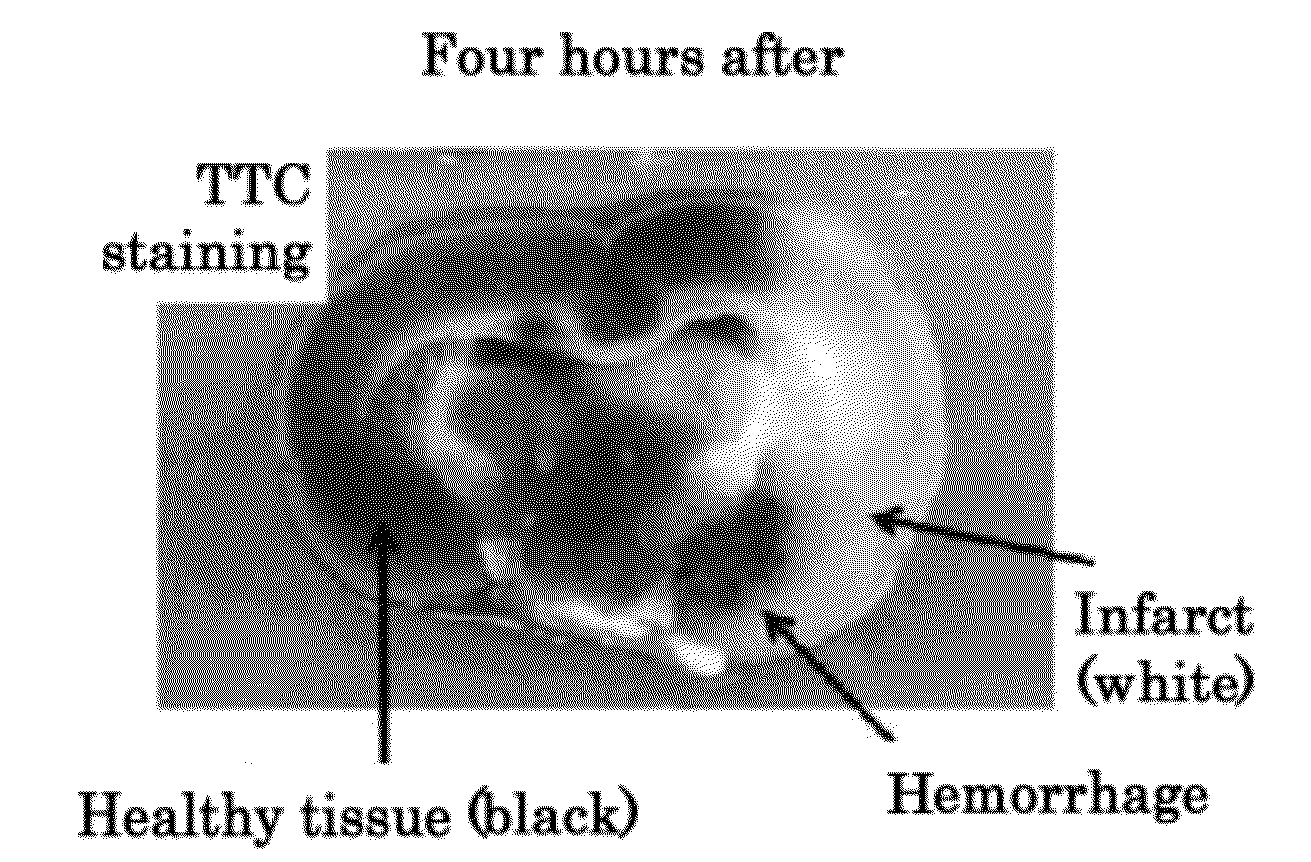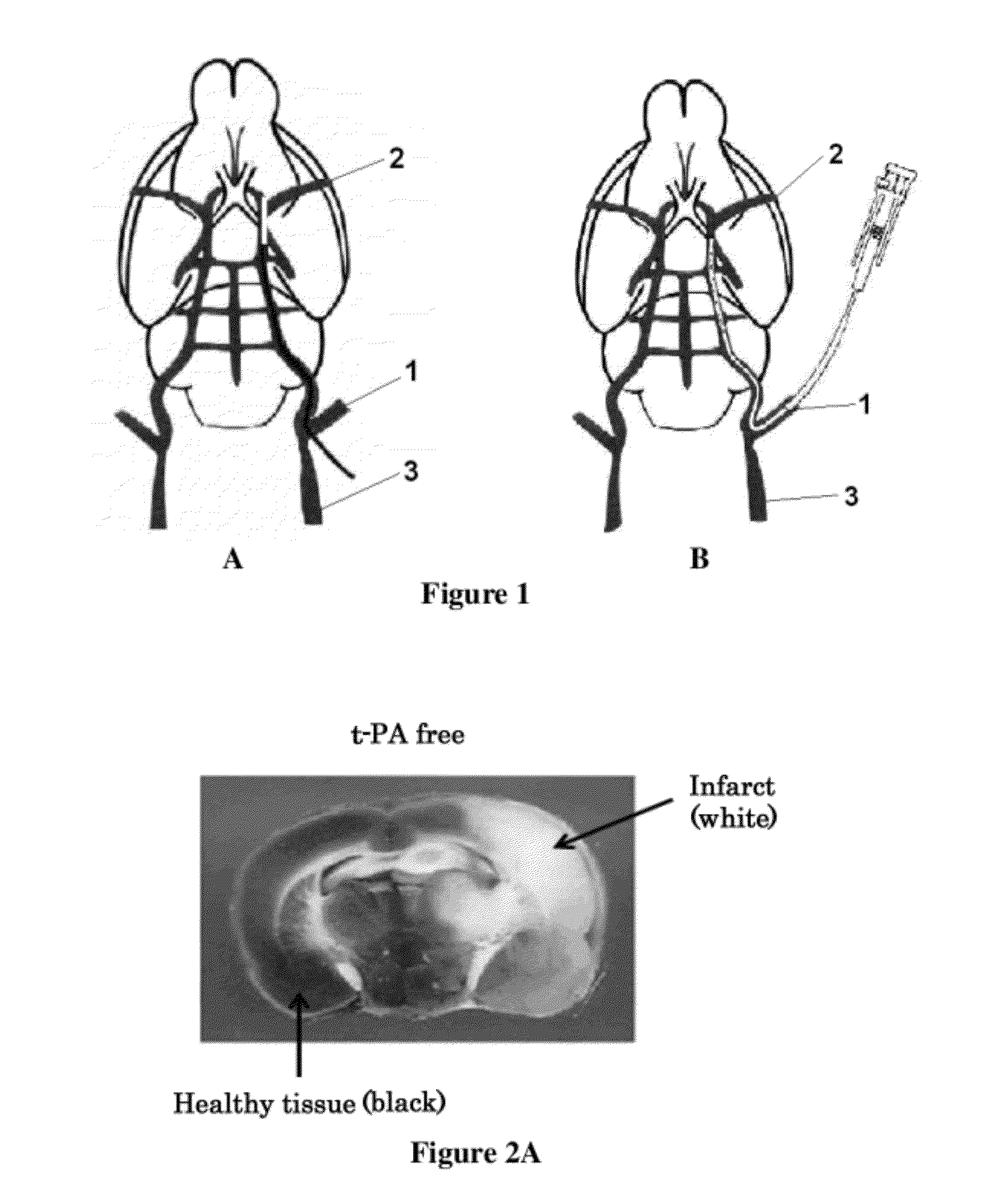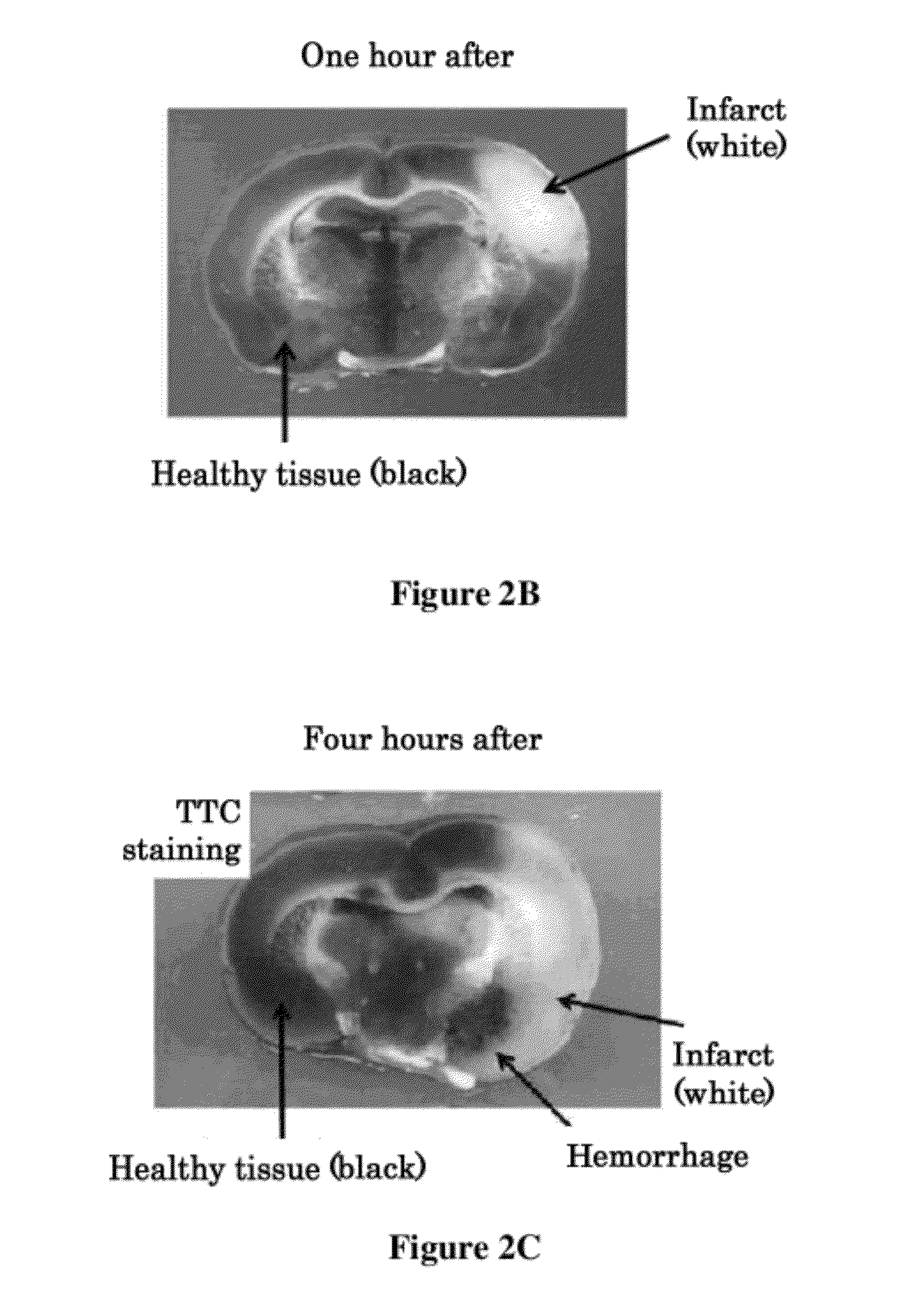Pharmaceutical composition for treating ischemic events
a technology of ischemic events and pharmaceutical compositions, applied in the direction of antibody medical ingredients, extracellular fluid disorders, peptide/protein ingredients, etc., can solve the problems of ischemic events that involve a particularly high risk of cerebral hemorrhage, the administration of t-pa is ineffective if administered, and the death at wors
- Summary
- Abstract
- Description
- Claims
- Application Information
AI Technical Summary
Benefits of technology
Problems solved by technology
Method used
Image
Examples
example 1
[0151]Production of Cerebral Infarction Rat Model
[0152]Experimental Animal
[0153]Sprague-Dawley rats (male, 8 weeks old, obtained from Charles River Laboratories Japan, Inc.) were used to produce cerebral infarction rat models.
[0154]Production of Cerebral Infarction Rat Model
[0155]Referring to FIGS. 1A and 1B, next will be described a method for producing cerebral infarction rat models in the present invention.
[0156]In conventional middle cerebral artery occlusion models, the middle cerebral artery was occluded by passing a nylon thread to the base portion of the middle cerebral artery (MCA) (2) from the external carotid artery (ECA) 1 or the branched portion between the external carotid artery (ECA) 1 and the common carotid artery (CCA) 3 (FIG. 1A).
[0157]In the present examples, a cerebral infarction rat model shown in FIG. 1B was produced in order to realize a state where cerebral hemorrhage concomitantly occurs as a result of administration of a thrombolytic agent after the therap...
example 2
Suppression of VEGF Using Anti-VEGF Antibody
[0170]In order to suppress or reduce concomitantly occurring cerebral hemorrhage and cerebral infarction exacerbation accompanied with the administration of the t-PA after an acute stage of cerebral infarction in human, 100 μg of rabbit anti-rat VEGF antibody IgG (RB-222, product of Lab Vision-NeoMarkers, hereinafter “anti-VEGF antibody”) was bolus administered together with the t-PA. In the control experiment, 100 μg of rabbit anti-human IgG (R5G10-048, product of OEM Concepts, hereinafter “control antibody”) was bolus administered together with the t-PA.
[0171]Western Blotting
[0172]Using the total cell extract as a sample, western blotting was performed according to the method described in Shimohata, T., et al. (J. Cereb. Blood Flow Metab. (2007) 27:1463-1475).
[0173]The VEGF was detected using anti-VEGF antibody (SC-152, product of Santa Cruz Biotechnologies, dilution ratio: 1:200) as a primary antibody, and peroxidase-conjugated anti-rab...
example 3
Evaluation of Effects of Combined Administration of t-Pa and Anti-VEGF Antibody
[0181]The combined administration of the t-PA and the anti-VEGF antibody was performed as described in Example 2. The effects of the combined administration of the t-PA and the anti-VEGF antibody four hours after the onset of cerebral infarction induced by injection of the thrombus were evaluated by measuring the cerebral infarct volume, edema volume, cerebral hemorrhage volume, and motor function scale of the TTC-stained cerebral coronal section prepared 24 hours after the onset of cerebral infarction induced by injection of the thrombus.
[0182]The cerebral infarct volume and the edema volume of the TTC-stained cerebral coronal section were calculated according to Swanson, R. A., et al. (J. Cereb. Blood Flow Metab. (1990) 10:290-293). The statistical significance was validated by ANOVA (analysis of variance), and post hoc comparisons were performed by the Tukey method.
[0183]The cerebral hemorrhage volume ...
PUM
| Property | Measurement | Unit |
|---|---|---|
| time | aaaaa | aaaaa |
| diameter | aaaaa | aaaaa |
| length | aaaaa | aaaaa |
Abstract
Description
Claims
Application Information
 Login to View More
Login to View More - R&D
- Intellectual Property
- Life Sciences
- Materials
- Tech Scout
- Unparalleled Data Quality
- Higher Quality Content
- 60% Fewer Hallucinations
Browse by: Latest US Patents, China's latest patents, Technical Efficacy Thesaurus, Application Domain, Technology Topic, Popular Technical Reports.
© 2025 PatSnap. All rights reserved.Legal|Privacy policy|Modern Slavery Act Transparency Statement|Sitemap|About US| Contact US: help@patsnap.com



